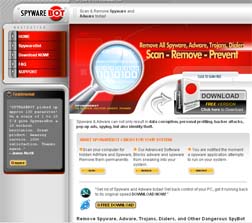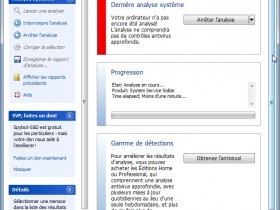

- #Is spybot search and destroy still good install
- #Is spybot search and destroy still good update
- #Is spybot search and destroy still good manual
Rather, you use it to scan and remove malware that’s already present. Spybot does none of these, as its free edition doesn’t have a real-time protection component. Still others, including McAfee AntiVirus Plus and Avast, only scan when a program tries to launch. Others scan when I click on the samples, or move them to a new folder. For some, scanning kicks in as soon as I open a folder containing my samples. Normally I test malware protection by invoking the antivirus product’s real-time protection. I didn’t use any ransomware samples, because there’s no point in removing those after they’ve done their dirty deeds.
#Is spybot search and destroy still good install
As with Malwarebytes and FixMeStick, I had to test Spybot by repeatedly letting a handful of samples install and then challenging it to remove them. In addition, my own hands-on malware protectiontest isn’t relevant, because the free Spybot doesn’t include real-time protection.

I follow regular reports from four independent antivirus testing labs, but none of the reports include data on Spybot’s capabilities. When I clicked Fix Selected, it did the job in a flash. Spybot didn’t find any spyware on this clean system, naturally, but it did turn up a collection of browser tracks, lists of recent files, and other potential targets for snoops. Where most antivirus products scan each file to see if it’s malicious, Spybot apparently works through a list of spyware and adware to see if they’re present, displaying a name like Fraud.SysGuard or for each. I could see in the scan progress display that it works differently from most competitors.
#Is spybot search and destroy still good update
Don’t forget to update manually before each time you run a scan.Ī full scan of my standard clean test system took 23 minutes, quite a bit less than the current average of a bit over an hour. Scanning With SpybotĪs noted, Spybot reserves automatic updates for paying users. Three buttons let you launch a scan, check for updates, or do something called Immunization. Once you’ve finished that quick signature update, you see the Start Center, Spybot’s main window. You can apparently set an update task using the very awkward Windows Task Scheduler, as you can with Microsoft Windows Defender Security Center, but I doubt many users do.
#Is spybot search and destroy still good manual
Updating is a manual affair, unless you spring for a paid edition. That’s essential, because out of the box the product doesn’t have any signatures. For testing purposes, I naturally chose the latter.īy default, Spybot checks for updated malware signatures at first launch. Donate now.” Given that the free product does not attempt to remove Trojan horse malware, even if you donate, that’s not such a good message.ĭuring installation you make a clear choice of “I want to be protected without having to attend to it myself” or “I want more control, more feedback and more responsibility.” The former is the default. For example, one says, “You know, a good horse is expensive…A Trojan horse even more so. I also must point out that some of the donation requests embedded in the program are misleading. This combination of ad-supported downloads and shareware-like donation requests is unusual. I’m accustomed to seeing free products that nudge you to upgrade to a paid edition.

The download page lists numerous mirror sites that were totally unfamiliar to me, along with three owned by the company, marked “ad-free.” I used one of those three.


 0 kommentar(er)
0 kommentar(er)
